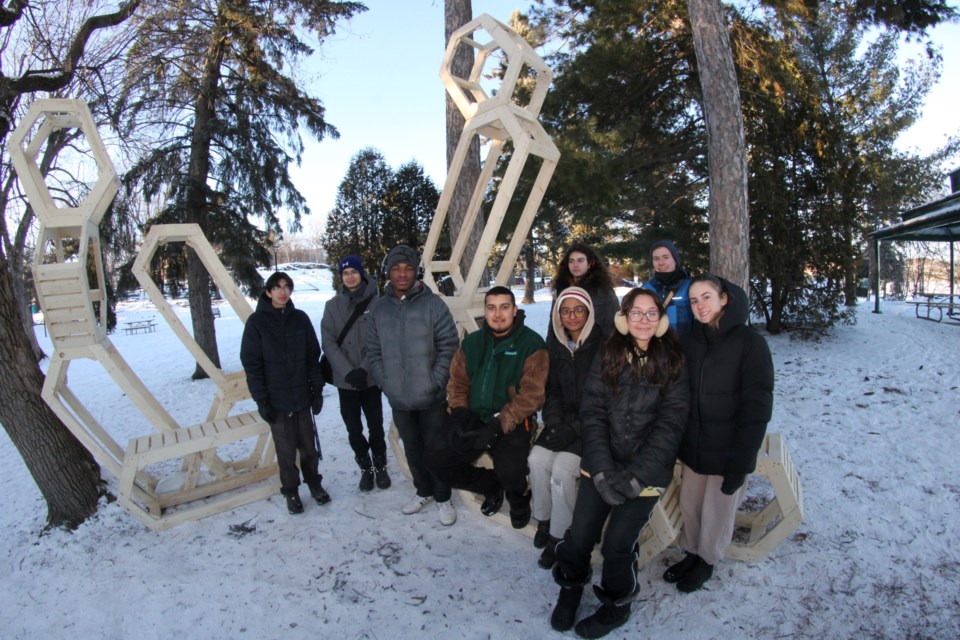Four wooden structures have been erected at Bell Park by first-year students from the McEwen School of Architecture, each one carrying context students hope will come across to passersby.
The creations are part of an annual effort that has students create shelters for skaters on the Ramsey Lake skating path.
With unseasonably mild weather preventing the path from opening, the structures were installed this year on the frozen main beach and surrounding area.
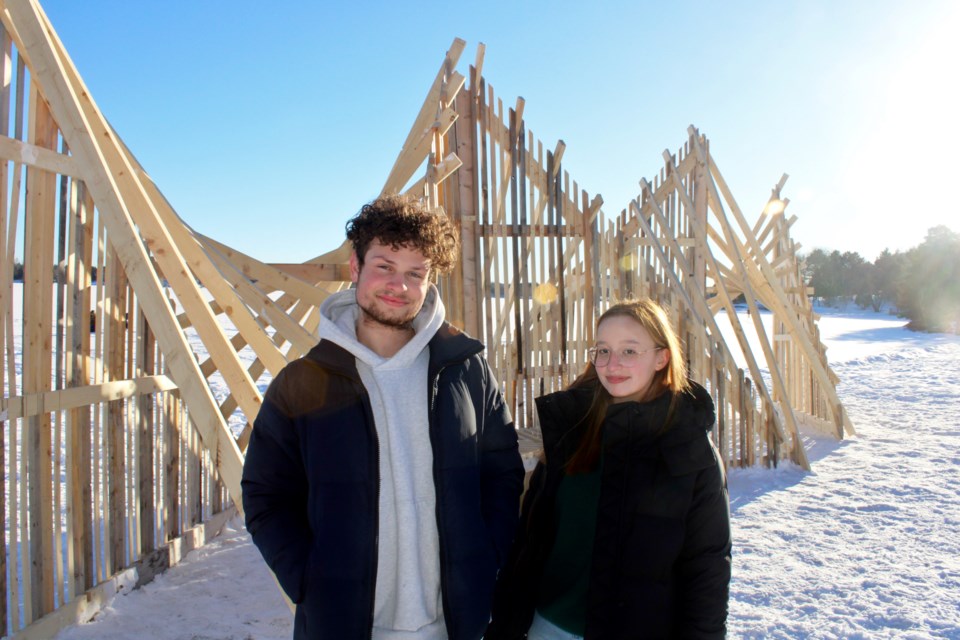
“The fact that we’re not on the ice this year is undesirable, but unique,” McEwen School of Architecture master lecturer Jean-Philippe Saucier told Sudbury.com during the outdoor exhibit’s unveiling on Wednesday evening.
“We have to remain nimble and flexible, and students need to adapt, and we know there’s always uncertainty when we’re building this.”
Adapting to changing circumstances, he said, is a good lesson for students to learn, alongside the necessity of teamwork in realizing a shared vision and the difference between planning something out on a piece of paper and actually building it.
“That’s the spirit of design-build, we don’t only build what we’ve designed, we have to think about the design as we go.”
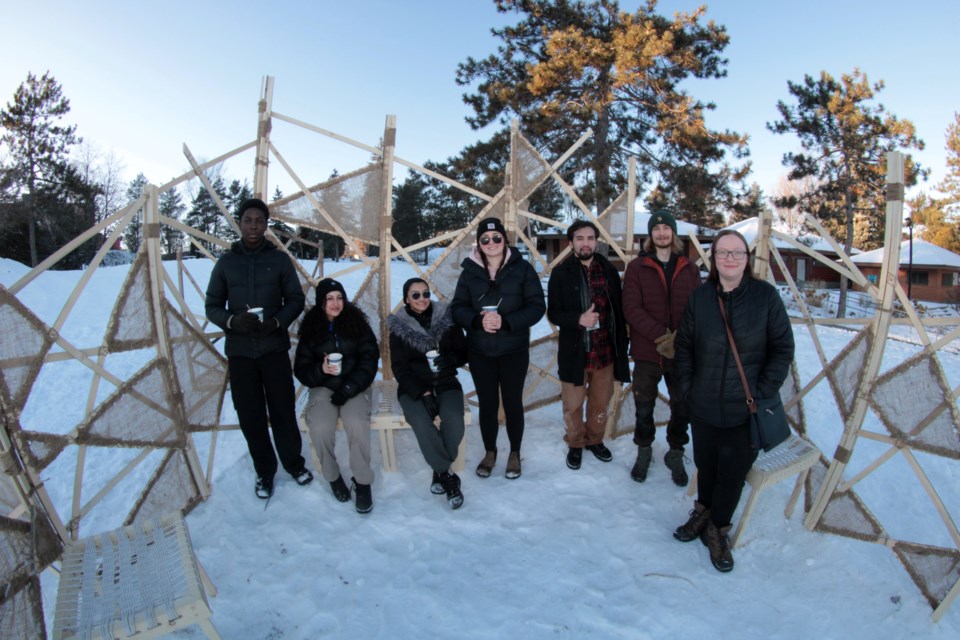
A group of nine students built this year’s largest piece, which they called “Wavy.”
“We tried to find a way to represent what a wave looks like without having to bend wood,” student Alexa Costesta told Sudbury.com. “When you look at it straight, it looks like a curve.”
Like all four of this year’s pieces, Wavy includes benches for skaters (in this year’s case, pedestrians), and is made of wood.
“I’ve always been inspired by creating something that evokes a lot of emotion in people,” student Ethan Shoup said, adding that he hopes Wavy does this for people.
To the north of Wavy is a piece called Ad Astra, which a group of 12 students from Tristian O’Gorman’s studio created.
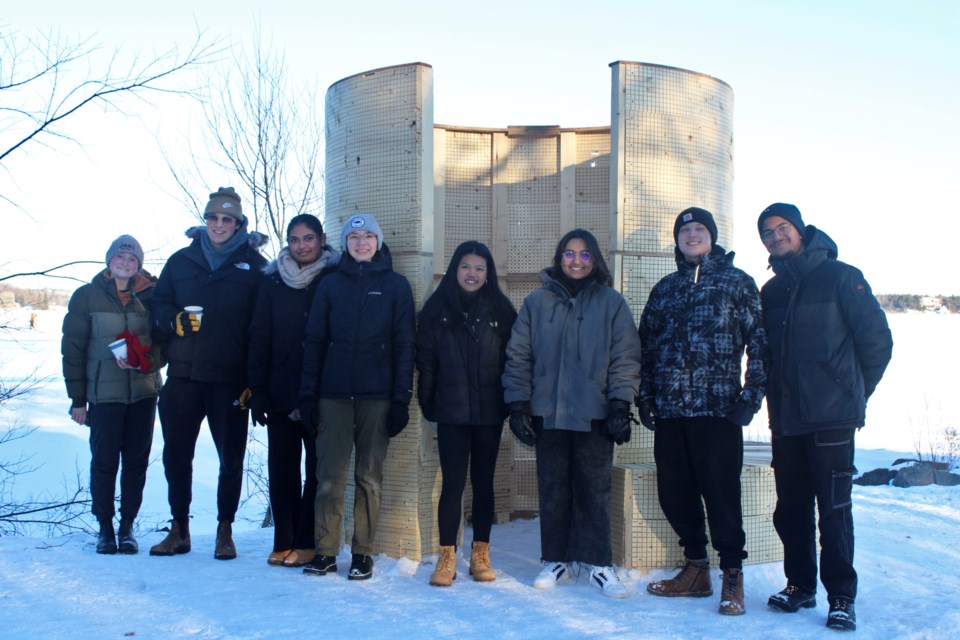
“If you go inside it’s basically like framing the sky,” student Ali Tolba said, adding the approximately 8,000 to 9,000 cuts in the wood which surround the circular warming station have created a series of tiny holes for the sun to shine through during the day, making it semi-transparent.
“We’ve incorporated the celestial connection with light,” student Aidan Evans said.
The piece is also fragile as a result of the many cuts, Tolba said, which he added is in keeping with its other theme of decay.
“If it breaks we’re not going back, it’s all part of the decay,” he said. “It’s part of going back to nature.”
Nearby, nestled between trees, is “Tesselation,” created by a group of 11 students from Pamela Nelson’s studio group.
The piece includes benches accompanied by shapes stretching vertically.
“We’re focusing on perfect geometry ... inspired by ice crystals,” student Anna Sunil Alexiose told Sudbury.com, adding that putting the piece together was “a lot of fun.”
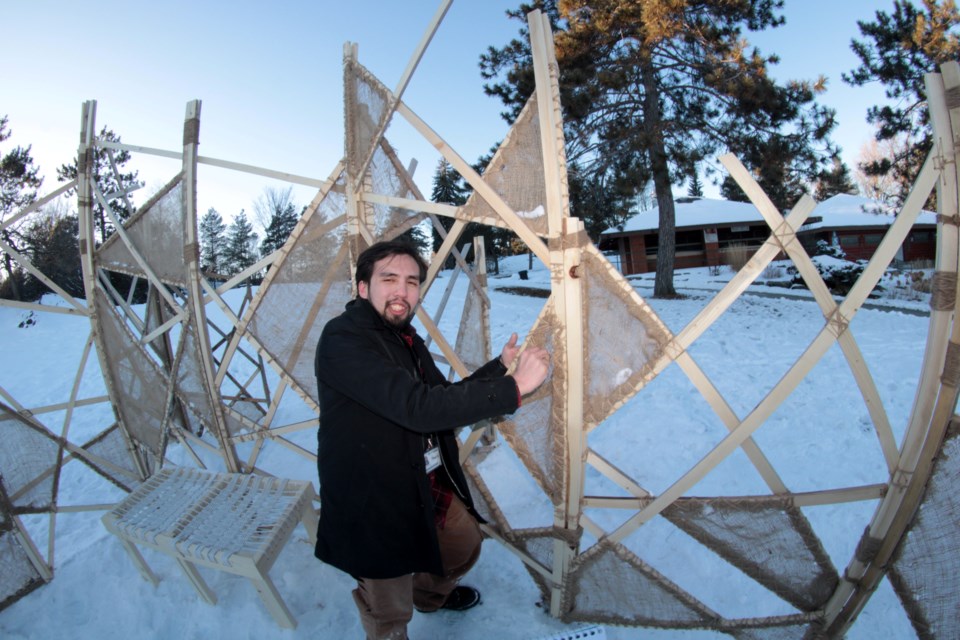
The final piece is Frozen Fractal, which is designed to look like ice crystals.
Similar to Ad Astra, it’s meant to change with the evolving environment, student Richard Wrigley said, noting the burlap material found throughout the creation is meant to echo that of ice.
Where ice melts slightly as a result of friction with skates, snow melts slightly when it hits the burlap, and then clings to it.
Frozen Fractal was created without the use of nails, with all of the wood fastened by twine lashing.
The structures will remain up for approximately one month, during which students will return to document their use and durability.
In a media release issued by the McEwen School of Architecture, it’s noted their goal is that, in addition to helping educate their students, the structures will “provide a beautiful resting spot for walkers, where they can sit and enjoy the view and in some cases be protected from the cold wind.”
After they’re dismantled in mid-March, the wood will be recycled for students’ future projects.
Tyler Clarke covers city hall and political affairs for Sudbury.com.
